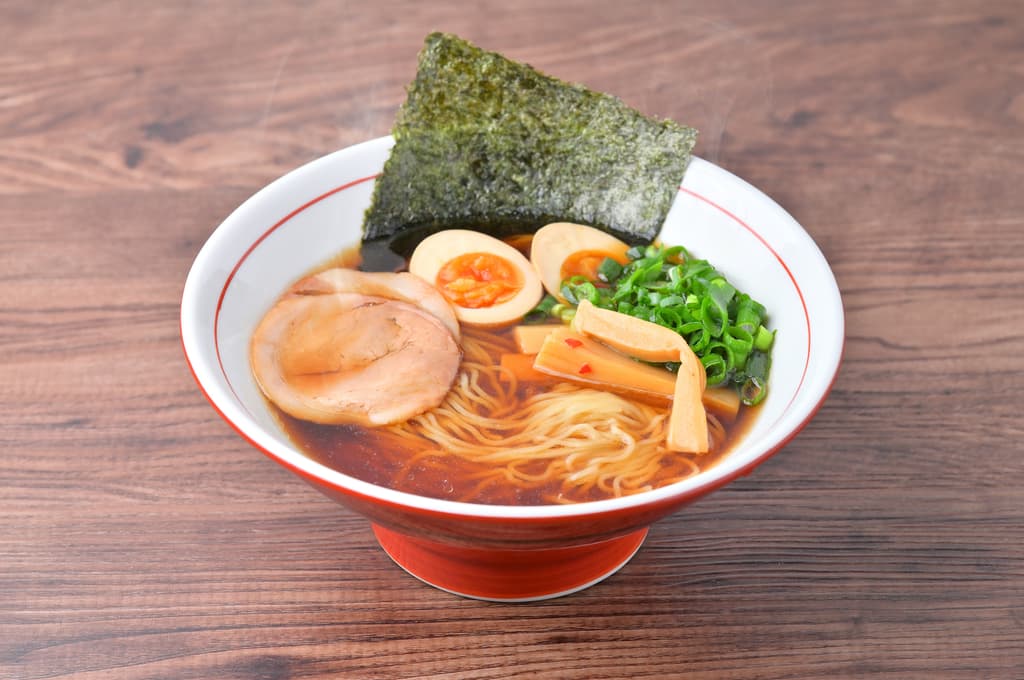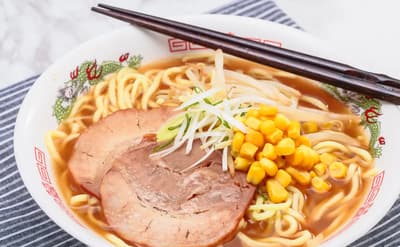Japanese ramen is now available in many countries. You can eat ramen in many places around the world. However, authentic ramen is a little bit different! The flavor of the soup, noodles, ingredients, and other aspects of ramen differ from store to store and from area to area, making ramen a deeply satisfying gourmet experience. The more you try it, the more profound the taste is. This month’s article will introduce information on ramen! If you come to Japan, you should definitely try some!
What is Ramen?
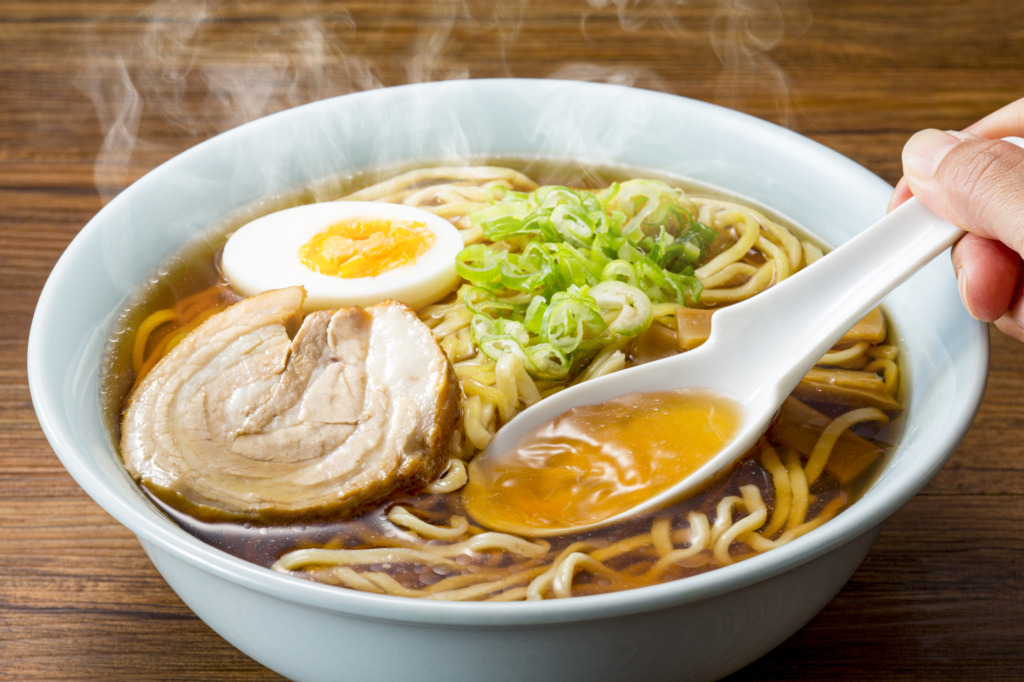
Ramen is a noodle dish that originated in China, but was introduced to Japan more than 300 years ago and evolved into the ramen of today as it merged with Japanese food culture. It is now a staple Japanese gourmet food that can be considered Japan’s national dish.
Ramen can be created in an infinite number of recipes by combining five elements: noodles, broth, sauce, ingredients, and fat/oil. There are many variations of ramen in Japan, depending on taste and style, including soy sauce ramen, miso ramen, salt ramen, tonkotsu ramen, and tsukemen (dipping noodles). Local ramen” reflecting the different climate, climate, and food culture of each region of Japan is another attraction.
Typical types of ramen
Shoyu ramen (soy sauce)
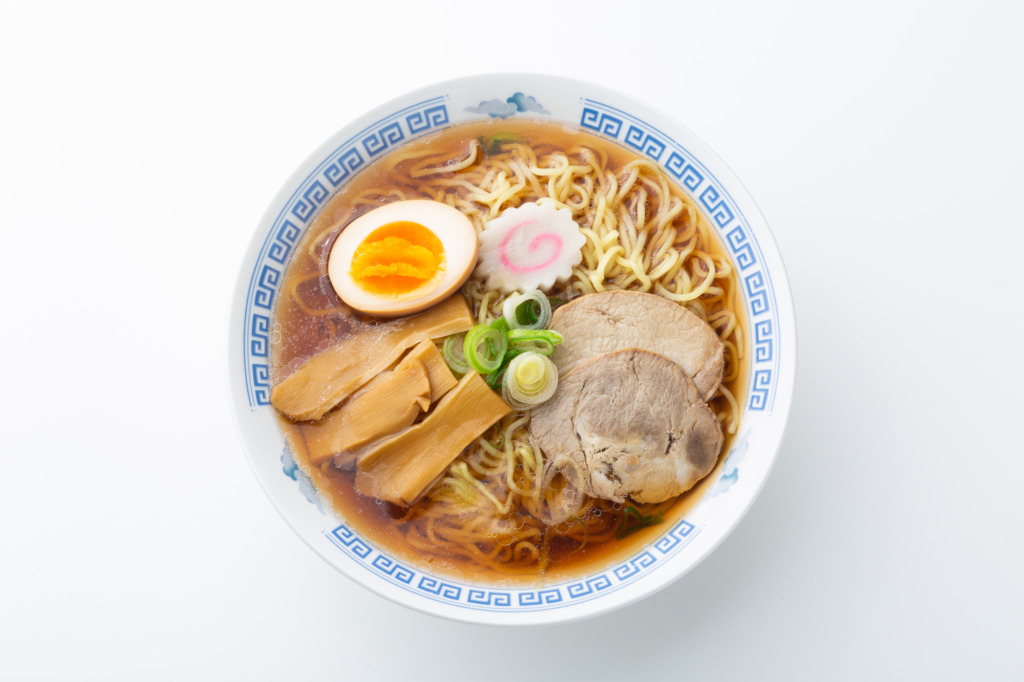
Shoyu ramen is one of the most popular types of ramen in Japan and is also called “Chinese soba. This clear, brown broth is characterized by its soy sauce flavor and is often made from chicken bones, but in some regions pork or fish are used.
Miso ramen (soybean paste)
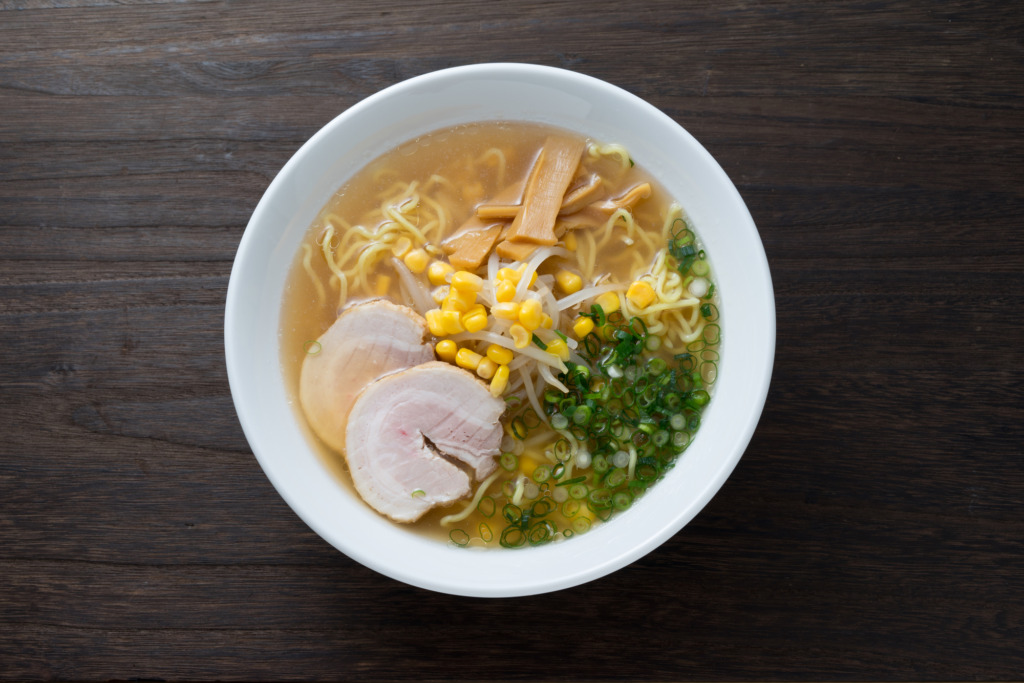
Miso ramen is a type of ramen that uses miso sauce. Miso ramen was born in Sapporo, Hokkaido, and has become such a staple that it is now considered the most common Sapporo ramen. It is characterized by its many vegetables, corn, and butter as ingredients.
Tonkotsu ramen (pork bone)
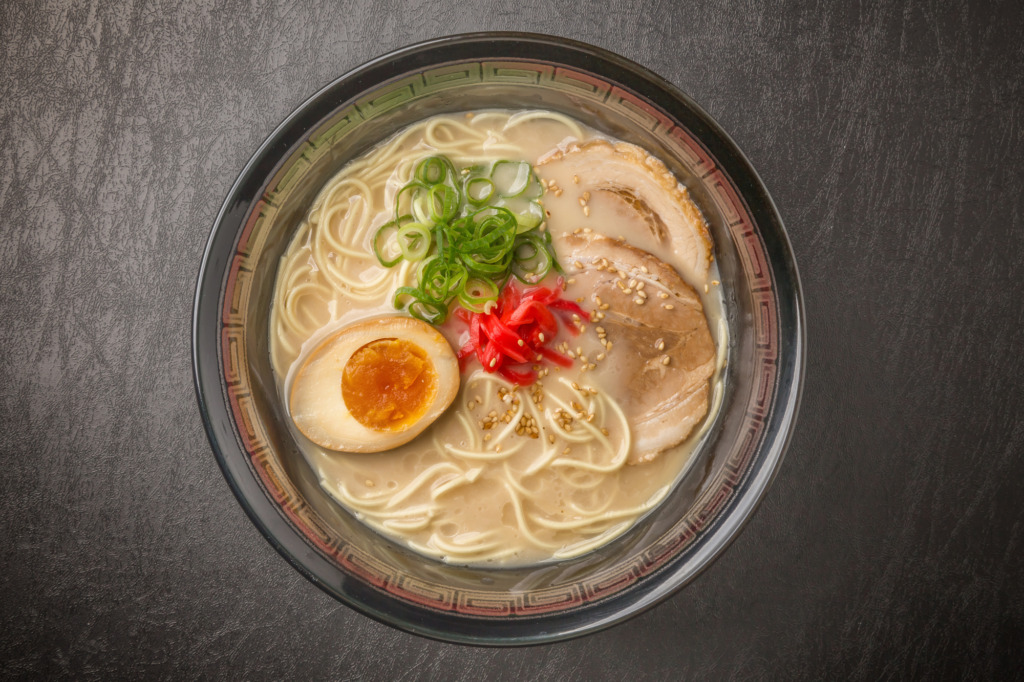
Tonkotsu ramen is widely popular in Kyushu region, especially in Fukuoka Prefecture. Pork bones and chicken bones are used to make the soup, which is characterized by a thick broth extracted by simmering for a long time. Tonkotsu ramen is becoming increasingly popular among overseas tourists.
Shio ramen (salt)
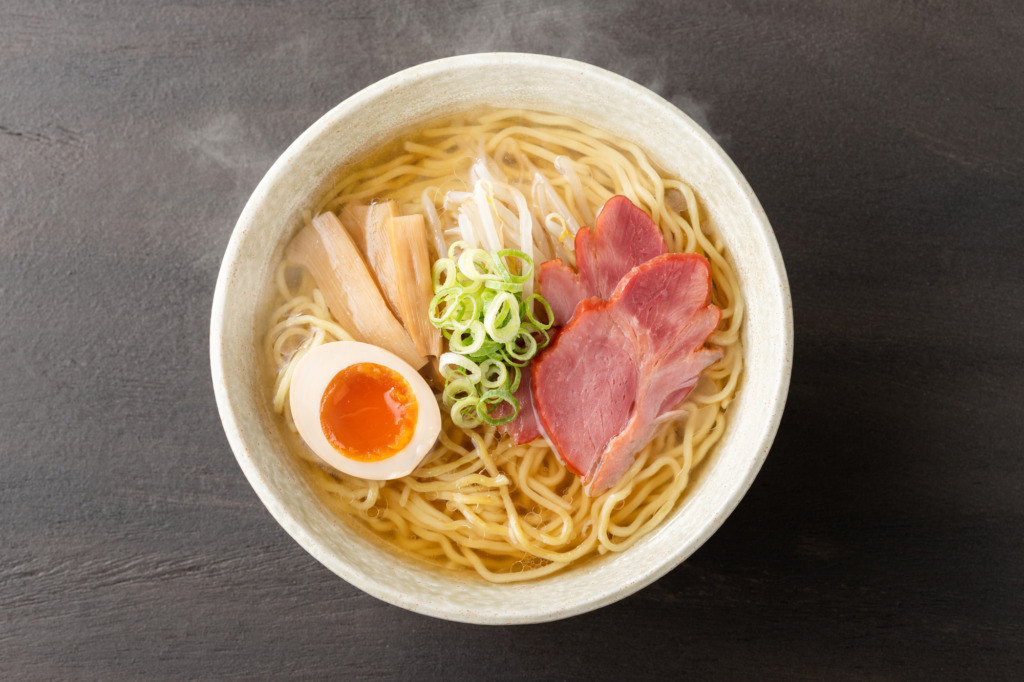
Shio ramen is one of Japan’s oldest and most popular ramen dishes, characterized by its light, clear soup based on salt and dashi. It is mainly made with chicken stock, but sometimes flavored with pork. Its simple flavor is appealing, and it is lighter than tonkotsu (pork bone) ramen.
Tsukemen (dipping noodles)
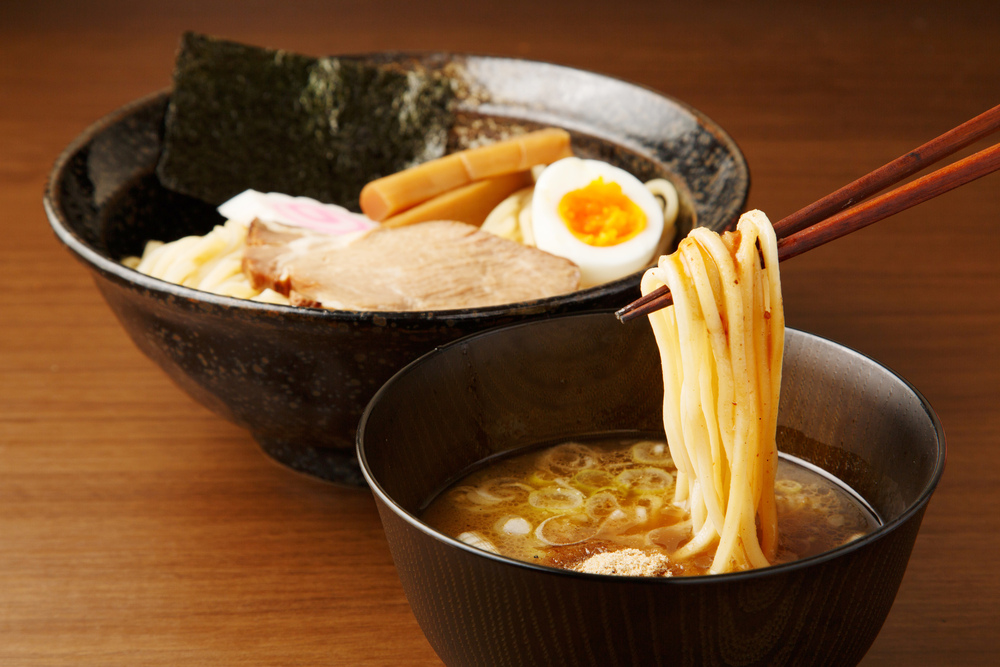
Tsukemen is different from the ramen noodles introduced above in that the noodles and soup are served separately. The noodles are dipped into the soup one bite at a time. Many restaurants use thicker noodles, which are more satisfying than other ramen.
Taste, precautions and manners
How to Taste Ramen
Taste the soupThe broth of a ramen greatly determines the character of the ramen. It is recommended to taste only a little of the broth first and enjoy its flavor.
Enjoy the texture of noodlesNoodles taste best when they are first eaten. Start eating as early as possible to savor the firmness and texture of the noodles.
Enjoy the balance of ingredientsRamen noodles contain a variety of ingredients such as chashu pork, green onions, and bamboo shoots. By eating not only the noodles and soup, but also these ingredients together, one can enjoy a balance of different flavors.
Ordering noodle hardnessAt some Japanese ramen restaurants, you may be able to order “hard,” “normal,” or “soft” noodles. Choose according to your preference.
Using the noodle refill option (kaedama)Many ramen shops in Japan offer a menu item called “kaedama”. This is a system that allows people who are not satisfied with just one bowl of ramen to pay for more noodles while keeping the soup.
Notes on Eating
Beware of heatRamen is often served very hot. The soup in particular can burn your mouth, so it is best to let it cool down a bit before you start eating it.
make a sound and eat itIn Japan, slurping ramen (eating it noisily) is considered a trick to enjoy the taste, and is not considered a breach of etiquette. If you have difficulty eating ramen, slurp it up without worrying about the noise.
Add toppingsSome ramen stores have additional toppings (spicy oil, garlic, green onions, etc.) prepared at the table. It is recommended to try them for a change in taste.
You don’t have to drink up the soup.Ramen soup is often very flavorful, and there is no need to drink it all. It is best to go easy on the salt, especially if you are concerned about the salt content.
Where Ramen Gathers
Tokyo: Tokyo Ramen Street
Tokyo Ramen Street is a gourmet street where eight famous Tokyo Ramen restaurants gather. It is located in an area called Tokyo Station 1st Avenue in the basement of Tokyo Station. Each of the ramen stores gathered here has its own unique flavor, so think about what you want to try and decide which store you want to enter.
Tokyo: Tokyo Ramen Kokugikan Mai
Tokyo Ramen Kokugikan Mai is located on the 5th floor of Aqua City Odaiba, a commercial facility in Odaiba. Six famous ramen restaurants from all over Japan are gathered here.
Hokkaido: Original Sapporo Ramen Yokocho
The original Sapporo Ramen Yokocho is located in Sapporo, Hokkaido. This is the birthplace of miso ramen, and the alley is lined with 17 ramen stores. All of them serve miso ramen, but each has its own unique flavor, ranging from simple, old-fashioned miso ramen to ramen with elaborate ingredients. It is recommended that you visit all the ramen stores to compare the different types of ramen.
Kyoto: Kyoto Ramen Koji
Kyoto Ramen Koji is located in the Kyoto Station Building.In addition to the three famous restaurants in Kyoto, there are nine other famous restaurants from all over Japan. The website has an easy-to-understand summary of each store’s features, so check it out before you go.
Osaka: Namba Ramen Ichiza
Namba Ramen Ichiza is located on the 9th floor of the EDION Namba Main Store, an electronics retail store in Namba, Osaka. It is home to nine of the nation’s best stores. EDION Namba main store sells not only home appliances, but also Japanese candy, toys, and precious metals, so you can enjoy shopping together with ramen.
Fukuoka: Hakata Noodle Street
Hakata Noodle Street is located on the 2nd floor of Fukuoka Station Building. There are 12 stores occupying the building. All of them are Hakata Ramen restaurants based on tonkotsu (pork bone) soup. Even within the same Hakata Ramen, there are many different personalities. We recommend that you visit all the stores and enjoy the differences between them.
Ramen Attraction
Shin-Yokohama Ramen Museum
The Shin-Yokohama Ramen Museum is a ramen food amusement park. There is a ramen-making experience, a museum store with original snacks and goods, and a gallery where visitors can learn about the history of ramen. In addition, the interior of the museum has a retro atmosphere, created in the image of old Japan, allowing visitors to enjoy a sense of Japaneseness.
Of course, you can also eat ramen. In addition to the five permanent stores, there are limited-time-only stores that change periodically, so you can enjoy different ramen depending on the time of year you visit. Visitors can taste unique ramen from all over Japan.
Cupnoodles Museum, Yokohama
The Cupnoodles Museum Yokohama is a facility where visitors can learn more about the well-known instant ramen products Cupnoodles and Chicken Ramen. Visitors can experience making their own Chicken Ramen and original Cup Noodles. There is also a store where you can purchase original goods, athletic facilities, and many other programs to enjoy.
There is also a food attraction where visitors can taste various “noodles” from around the world, which the developer of Chicken Ramen encountered on his journey to find the roots of “noodles”.
Cupnoodles Museum, Osaka Ikeda
There is another facility in Osaka where you can experience a program that is almost identical to the one at the Cupnoodles Museum in Yokohama. Here, too, you can experience making your own Chicken Ramen and original Cup Noodles.
